
A major new power line is being developed in the East Highlands. Running roughly 170km from Caithness, through Easter Ross, into Inverness-shire, the Spittal - Loch Buidhe - Beauly 400kV Reinforcement will be a similar scale to the Beauly-Denny line completed around a decade ago, and may prove equally controversial.
With the route already established to a 1km corridor prior to public consultation, the deadline for comments on the initial stage of the project is 14th April.

Including pylons 50-60m high, extensive ground works, many miles of access roads, and cutting a permanent swath through woodland on the route, the Spittal-Beauly line being built by energy giant Scottish and Southern Electricity Networks (SSEN) will have a significant impact on the landscape and ecology of the areas through which it passes.
It will also affect climbers and hillwalkers. Running across the southern foothills of Ben Wyvis, the 'preferred route' for the overhead line will feature in views both to and from the mountain, becoming part of the classic view of 'The Ben' from as far as Inverness.
The likely route for the line cuts through the wildlife-rich woods at Contin and Strathpeffer, an extensive area of mixed woodland that serves as one of the best-used resources in the area for walkers, runners and cyclists, and hosts the annual Strathpuffer mountain bike race.
As curently conceived, pylons will pass close to the popular sport climbing venue of Moy Rock (Dingwall) as the line crosses the mouth of Strathconon at Contin, often considered the tourist 'gateway' to the north highlands. Further north, the setting of the Loch Fleet crags will be closely affected.
An alternative option for the line presented in initial consultation takes it through one Scotland's most extensive Wild Land Areas, Rhidoroch - Beinn Dearg - Ben Wyvis, before turning back east via the visitor attractions of the Black Water and Contin. A third possibility in the Strathpeffer area runs along the ridge of Knockfarrel and the Cat's Back, a popular hill with walkers and site of a famous prehistoric hill fort.

"No-one is arguing that clean electric power is not vital; it is not the reasoning behind the need, it is the methodology which is flawed" said local climber and UKC user John Mackenzie.
"Do you really want to see a line of pylons running behind the Heights as a footnote to Ben Wyvis when driving north, a mountain as important to Inverness and surrounds as Ben Lomond is to Glasgow?
"How does all this benefit the Highlands, does it mean our electricity will be cheaper, our lives made better when the perceived benefits all go south? How will it affect tourism, our main industry?"
Part of a UK-wide grid overhaul designed to bring renewable energy on a vast scale from the windy north to the power-hungry south, Spittal-Beauly is being driven on an accelerated timescale under targets for 2030 set by Scottish and UK Governments.
According to plans this will be one of four major lines all converging on the Beauly area, including a new route to Aberdeenshire and a connection from the Western Isles through the north Highlands via Dundonnell. While the system is designed to operate as a whole, and will also include major subsea cables from Aberdeenshire to England, each part of the project is being presented to affected communities and planners as a separate entity.
The Spittal-Beauly section has caused consternation among communities on the route, who fear that the proposal on the table will damage the local environment, habitats and rare species, as well as the area's quality of life and cultural heritage, harming the vital highland tourist economy for decades to come.
Local residents have criticised SSEN's public engagement to date as inadequate, and fear that the accelerated timescale of the project may not permit sufficient community involvement or lead to the outcome in the best interests of the wider public.
While supporting the need for green growth, community groups such as Strathpeffer and Contin Better Cable Route (SCBCR) fear the area will be collateral damage in the national drive to renewables. They ask why alternatives to the proposed overhead line routing, such as use of an existing pylon corridor, underground cabling or even a subsea connector, have been ruled out of contention from the outset.
Residents point to the fact that SSEN have determined a 1km-wide 'preferred route' prior to any consultation, based on unclear modelling criteria, and without on-the-ground impact assessments. As the project progresses, future consultation will, according to the company, simply help determine the position of pylons within this pre-established corridor. There appears to be no mechanism, fear campaigners, to substantially alter the line of the 'preferred route' to less sensitive locations beyond the 1km corridor. However, such alternative routes would be possible, they say.

There are calls for a more inclusive process that brings highland residents, decision makers, the power company and other stakeholders together to plan the project from first principles to completion. Absent such a move, communities - who feel themselves, literally, on the line - fear that SSEN is operating without adequate accountability or oversight. Beauly-Denny became bogged down in a lengthy public inquiry, it has been pointed out, and subsequent reports recommended that public engagement in such projects be improved.
"I like to think that we live in a fair democracy where people's opinions can be taken seriously, especially those directly affected by something imposed for strategic purposes" said John Mackenzie.
"So here we are in 2023, living in the most populated part of the north-east Highlands amidst scenery that most, less fortunate, members of the UK would consider fantastic, only to be told at short notice with limited time to assert our democratic rights, that 60m high pylons will be marching across our scenery, cutting across homes and villages.
"This is not a wasteland, this is an area of natural beauty where people come to live because it is a good place to bring children up, to work and to appreciate just how wonderful it is.
"In Europe, power lines running across areas of outstanding scenery would be undergrounded; so why not here? Could it be that corporate profits are more important? We need answers not cant, solutions not impositions. I think it is time we all thought again to defend what we hold dear."
SSEN said that "in order to support the continued growth in onshore and offshore renewables across the north of Scotland, supporting the country's drive towards net zero, further investment in network infrastructure is needed to connect this renewable power and transport it from source to areas of demand across the country".
The company's website states that "following extensive system studies, Spittal to Beauly has been identified as a critical corridor in establishing this required reinforcement".
A spokesperson for the company said the project is "part of a GB-wide programme of works that are required to meet UK and Scottish Government 2030 renewable targets".
"Whilst delivering this critical national infrastructure by 2030 requires an acceleration of the project development and delivery phases" they added, "we remain fully committed to work closely with the local community and wider stakeholders to help inform our design and it is important to note that the project remains in the early stages of development and no specific overhead line route alignments have been identified.
"We are currently seeking feedback on potential route options within approximately 1 kilometre wide areas and preferred substation locations, with this feedback helping inform more detailed overhead line route options and our proposed substation site selections, which we will further consult on later this year."
- The initial consultation deadline for feedback is 14th April. Local campaigners have provided resources to make this easier
- Details of the project can be seen on the ssen website













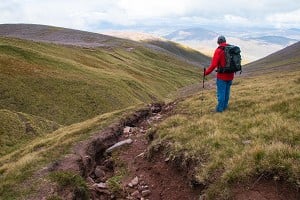

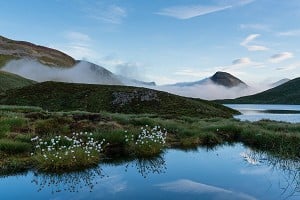









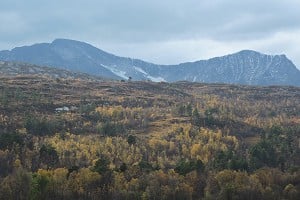

































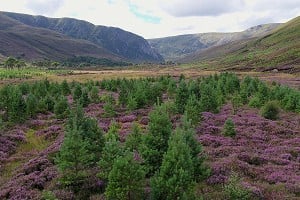





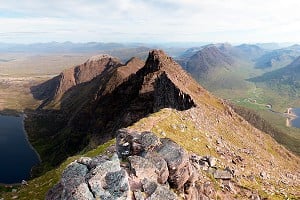



Comments
Surely if it’s avoiding the wild land of Rhidorroch-Dearg - Wyvis area, for the cultural landscape of farming and the (affluent) Inverness commuter belt the proposed route is the better option, from a mountaineers perspective preserving the primary wild land area?
Also isn’t better that energy infrastructure is adjacent to population centres so people make the link between what they consume and how and where the energy comes from?
I don't understand your second point to be honest. If energy infrastructure were to be sited next to population centres then there wouldn't be any need for this pylon line in the first place. Instead, places like London would be surrounded by millions of acres of solar farms. Most of the power being generated by the windfarms in the north of Scotland is for "export" to other regions of the UK. Not many people would make the argument that the windfarms are not important or necessary, but the routing of the infrastructure shouldn't be done at the expense of communities who are not the main market for the power.
On your first point, what you are in effect suggesting, is that the "wild land" of Rhidorrich etc is somehow prioritised as worthy of conservation at the expense of farmland or less "wild land". I'm not for one minute suggesting that the line should be routed that way, but the preferred route will cross a lot more than just fields... its 100+ miles long and will cross a hell of a lot of very scenic and important high ground. Much that is also extremely important from a conservation and historical consideration. The Strathpeffer and Ben Wyvis area is one of the most important regions for the highly endangered Scottish Wildcat, for example. All of the proposed routes will pass through this and cause a lot of very long lasting damage.
As I understand it, (and I live right in the line of the preferred corridor, close to Strathpeffer) Ofgem have instructed SSE not to even consider an upgrade of the existing corridor. This is not any kind of "public consultation". This line should be either taken along the existing corridor, be buried, or take a more direct subsea route.
Are Great Western Rock expanding their area of influence?
It'll be to take our electricity. Shetland is currently being turned into one giant wind farm.
I don't think much of the 'artist's impression', the diameter of those cables looks massively over-sized and the pylons themselves are rendered way too bright.